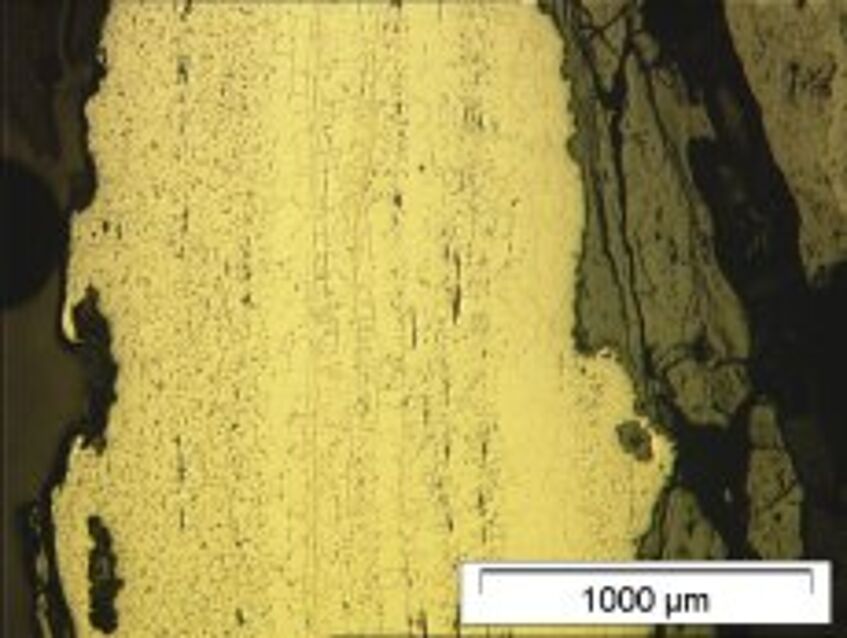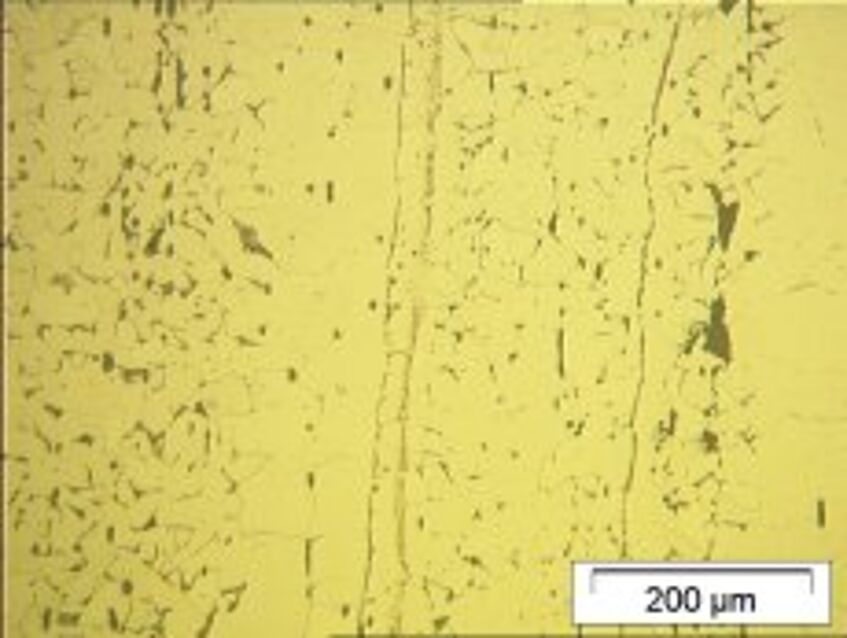The early Hungarian warrior grave from Gnadendorf, Lower Austria, (PI. M. Mehofer)
(PDF document by courtesy of the Römisch-Germanisches Zentralmuseum, Mainz, Germany.)
The founding ensemble of the Hungarian burial, which was recovered in 1999, contains not only various non-ferrous and precious metal objects but also several iron objects, including a saber - Inv. No. 19861. This equestrian weapon was subjected to a metallographic analysis.
The first step of the study was to determine the manufacturing quality of the artefact, then these results were correlated with an already completed research project on early medieval weapons development in the Austrian Danube region. As part of this project, in addition to various questions concerning the development of weapons, an insight into the forging technology of the Early and High Middle Ages in Austria was gained, as at the present time no comprehensive investigation results are available. Assuming that the blacksmith has used all his forging expertise in producing these types of "commodities" in order to create a usable weapon, it will be attempted to gain some insight into the manufacturing technology of the offensive and defensive weapons.
The first reserch in this regard was presented by Erik Szameit, Institute for Prehistoric and Historic Archaeology, University of Vienna, who has limited his work to X-ray technology. This method in many cases already provides extensive information about the structure of an object, however, neither the material and manufacturing quality nor the tempering quality can be determined.
These are all characteristics that can contribute significantly to the classification of an artifact in the forging as well as the archaeological context.

Gnadendorf – Saber, the arrow markes the polished surface shown in the cross-section, images not to scale.
For comparison, three objects from the burial ground of Zillingtal / Lower Austria from the Avar period were selected, which were analysed in the course of the above-mentioned project. These are two sabers (grave B 23 (?) and D 338) and a sword (FN D 3/6). Although there are considerable differences between the temporal and cultural classification of the individual objects, from a technological point of view, it seems reasonable to compare them - as all four of them are equestrian weapons which are similarly applied and used and are thus subject to similar design requirements. From this perspective, the results should be compared.
Considerations on using and loading a cut and thrust weapon
Unlike a double-edged sword, like a spathe, which allows its use as a cutting weapon (as well as a thrusting weapon) due to its structure and weight, the saber is more likely to be seen as a weapon with sliceing or thrusting function. Of course, it can also be used as a cutting weapon, but its armor piercing effect is not comparable to that of a spathe. Unlike the spathe, the saber, due to its use, is not only exposed to loads along its longitudinal axis, but also to increased loads along its transverse axis, e.g. as result of the execution of a stabbing movement. Increasing the cross-section compared to the double-edged sword could compensate for these loads. However, the bending and fracture loads occurring along the longitudinal axis can be compensated only partially by a reinforced approximately rectangular cross-section. Consequently, the saber is not fully suitable for use as a cutting weapon equivalent to the spathe.
Results

Linear structure, coarse and fine grained layers alternate.
In summary, it can be said that on none of the four equestrian weapons hardening of the cutting edge in the middle part could be found; the hardness values of the blades of the respective saber fluctuate between 102 HV 0.5 / 15 and 203 HV 0.5 / 15. A feature that, for example, can also be found on examined sabers from the cemetery Zelovce. However, these investigated sabers from the Avar period have a multi-part construction, a characteristic that can not be determined on any of the examined pieces.
Only for the saber D 338 the analysis of the samples from the tips of the individual weapons (from the saber of Gnadendorf a material sample could be taken) yielded signs of a hardened structure. Hardness values of 301 HV 0.5 / 15 are achieved here. At least here it can be concluded that the metal has an increased cooling rate, but the carbon content was insufficient to produce a fully developed hardened structure.
The material used to make the saber of Gnadendorf is of good quality. It seems to have been carefully homogenised before being transformed in its final form. Whether a heat treatment was carried out at the cutting edge can not be clearly answered since this area has fallen victim to corrosion. However, no signs of hardening can be found in the remaining material.

Fine - grained ferritic - pearlitic microstructure, vertical carburized welds are visible, coarse grain formation along a weld seam.
Whether the design technique of an unhardened cutting edge can be regarded as a rule in Early Medieval equestrian weapons can not be answered at the present time, since statistically the number of examined pieces seems too small for this general conclusion. Also, it can not yet be definitively determined whether this design scheme, if any, results from forging specifications, such as material quality, and / or increased blade elasticity requirements.
Literature
Mehofer, Mathias, Metallurgische Untersuchungen an einem Säbel aus dem ungarischen Reitergrab von Gnadendorf, in: Falko Daim - Ernst Lauermann (Hg.), Das frühungarische Kriegergrab aus Gnadendorf, Niederösterreich (Monographien des RGZM), Publikation in Druck.
Mehofer, Mathias, Szameit, Erik, Technologische Untersuchungen an Waffen des Frühmittelalters aus Oberösterreich. Jahrbuch des Oberösterreichischen Musealvereines . Band 147 / 1, 127 - 169, Linz 2002.
